Cyberpunk Red – The Actual Play Review
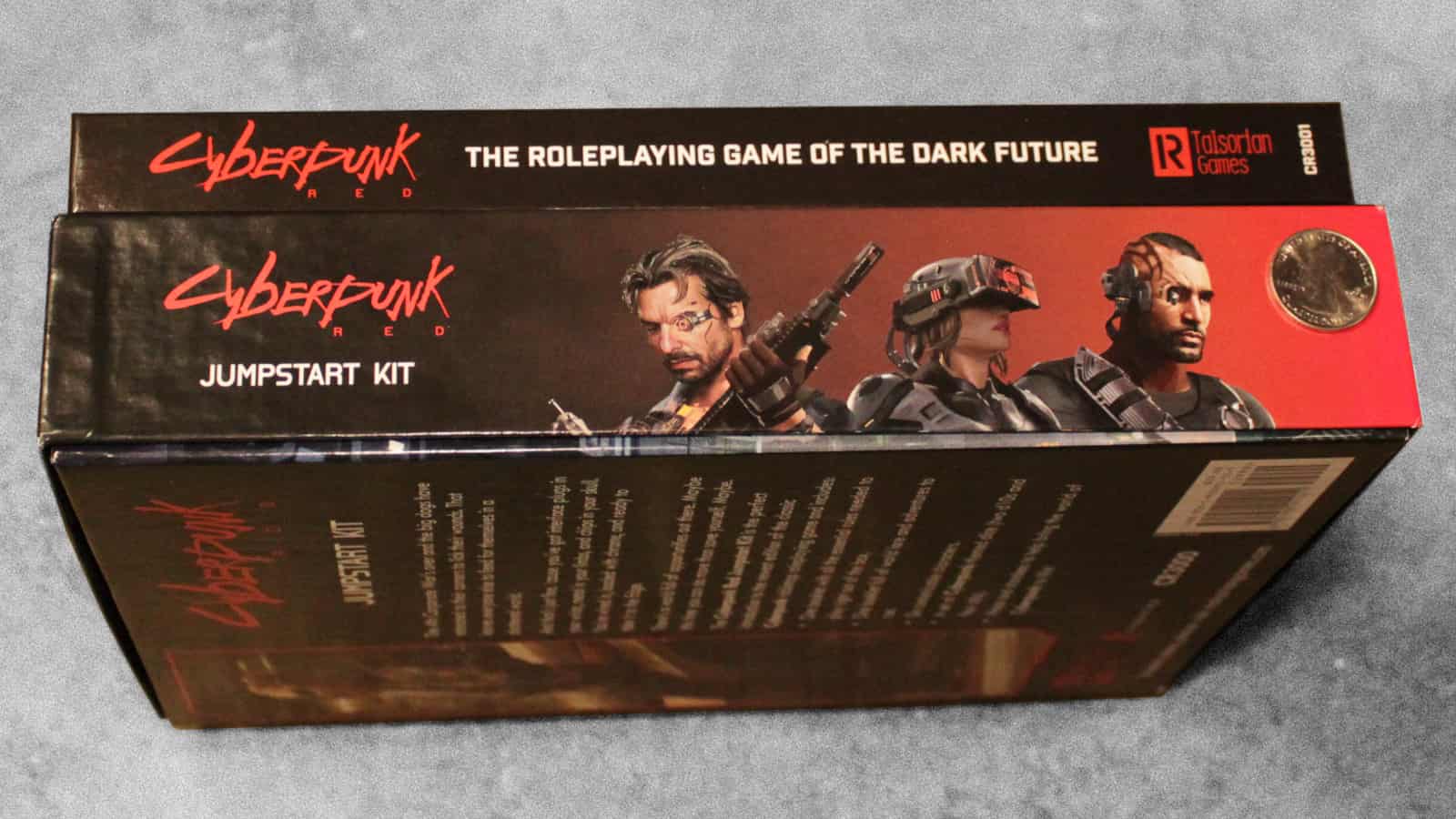
TL;DR
Cyberpunk Red puts players in the chromed-out retro-future of Night City in the year 2045. This is a game that knows what it is about, and it follows its earlier incarnations without being trapped by them. The mechanics are straightforward, and making interesting and engaging characters is easy. Cyberpunk Red is like an instruction manual – very focused on play, easy to absorb. It’s also full of visual and textual flavor that drops you right into the setting. Whether you use the Jumpstart Kit or the core rulebook, you’ll be getting a quality product. Read on to get more detailed impressions and see the differences between the two products.
Mirrorshades
It was a secretly subversive, outwardly severe high school librarian who first handed me a copy of William Gibson’s Burning Chrome, and told me I needed to read it. She was right. From that point on I devoured all the cyberpunk and cyberpunk-adjacent fiction I could get my hands on. Gibson, Sterling, Womack, Shirley, Williams, Effinger, Stephenson, and more – over the course of the next several years I read ’em all.
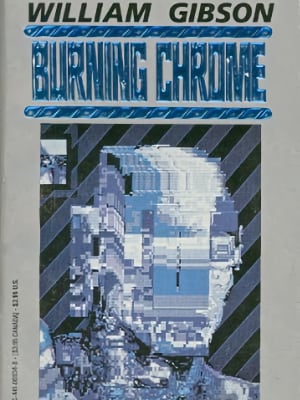
Since I was also constantly trying new tabletop RPGs at the time, it was only natural that I’d wind up playing Cyberpunk from R. Talsorian Games along the way. It was a blast. It possessed the kinetic energy of the works that inspired it, and there was something else about it – a self-assured, hard-driving attitude that seeped off the pages. But it didn’t have staying power with our group.
It wasn’t that we disliked it; I was just a youthful GM possessed of limited subtlety. I had a hard time building out a robust campaign in which PCs had a hope of living more than a couple of sessions, and there were other games that held our attention longer. So we dropped Cyberpunk after a few sessions.
I didn’t revisit the original Cyberpunk or try its second and third editions. While I did play other cyberpunk-infused games, over time the genre fell off my radar, mostly because it seemed like a dead end. Our reality had in many ways caught up and in some aspects surpassed the cyberpunk milieu first envisioned more than three decades ago.
But the arrival of Cyberpunk 2077 and its analog companion Cyberpunk Red piqued my interest. Regardless of updates, extensions, and remixes that have come since, cyberpunk as a genre really is tied to the 1980s. I was curious how the game had been updated. When I read that it was built around a timeline that diverged at around 1990 from our own, I became even more intrigued. Would it still feel like the future? Would it embody the old cyberpunk tropes? Would Cyberpunk played in 2020 feel like a tired and formulaic retread?
To explore these questions, I decided to gather up four of my fellow early GenXers, two of whom I hadn’t played tabletop RPGs with in over a decade, and run a Cyberpunk Red one-shot.
True Names
Before we go over the one-shot, a few words about our group’s preferences: we all started with D&D (shocker!) back in the day, before experimenting with a host of other games. RuneQuest and Aftermath! dropped into heavy rotation, followed by Shadowrun, Call of Cthulhu, and lots of Basic Roleplaying. Various members of the group have played in my Star Wars: Edge of the Empire, Eclipse Phase and Degenesis campaigns. I’ve run and playedFate CoreandPbtAgames, but with one exception none of the players has strayed very far from traditional systems.
None of the players are particularly fixated on character progression and power acquisition. Setting immersion is important to us. Character development matters, but this is a group that generally doesn’t create deep backstories, preferring instead to build them out as events unfold. For the most part the members of the group treat mechanics as a means to an end and are comfortable with house rules and on the fly GM adjudication, in large part because we trust each other after years of gaming together.
Down In It
Through happy circumstance I wound up with copies of both the boxed Jumpstart Kit and the core rulebook. After looking through both, I decided to use the Jumpstart Kit for the one-shot. I spent a couple of hours familiarizing myself with the rules and the setting. This would be a four-hour session using Slack for chat and dicebot, with Zoom for video. I wanted an adventure that focused squarely on the PCs, with only a few NPCs, most of them opponents.
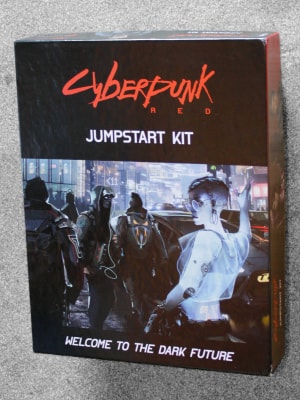
So rather than use the included adventure, I spent about an hour coming up with the loose outlines of a job in which the PCs would be hired to recover an important item from an aircraft that had just crashed in a huge junkyard on the outskirts of Night City. There would of course be another team with the same mission. Who can resist junkyard combat, amirite? Oh, and this being cyberpunk, the mission would take place at night. In the rain.
A lot happened in that four-hour session. The PCs won the fight in the junkyard (not without injury), found the all-important microchip and the defecting programmer who held it, made contact with the fixer who hired them, avoided death by remote-controlled-explosives-laden-motorcycles, escorted the defector into the waiting arms of his new corporate overlords, and made enough eurodollars to cover rent for a few months and then some.
I came into the game thinking of it as a mechanism for bringing us all together for a relaxed (if virtual) holiday gathering. But it was more than that; we all really enjoyed Cyberpunk Red. The crew loved how easily they were able to feel right at home in the setting, they liked the pregen characters, and they appreciated the smooth flow of the game’s mechanics. At the end of the session the players asked me to run it again, with the goal of making it an ongoing affair. So it looks like this one-shot is morphing into a campaign.
Islands in the Net
Back in the 80s the world of the original Cyberpunk felt like an accelerated version of what was already happening. Neon was everywhere, even (unfortunately) on clothing. Greed was being promoted as a noble quality: people were driving BMWs adorned with He Who Dies With The Most Toys Wins bumper stickers. The War on Drugs was loading up jails, gutting inner cities, and bringing US forces into shadow wars around the globe.
The militarization and privatization of police was ramping up. Restraints on corporate power were being lifted and independent farms were being wiped out. Japan was muscling in on US economic dominance, and it was clear that China was rising fast. The US Air Force denied the existence of a stealth fighter program everyone knew existed, and President Reagan announced the US was going to build an orbital laser defense system. Global computer networks would soon be accessible to the masses.
Cyberpunk Red feels different. It’s a near future grown from an alternate past. The old themes are still there: enormous wealth inequality, corporate power, the normalization of violence, technology as liberator and oppressor, how people hold onto their humanity in such a world. But the trappings around them are different.
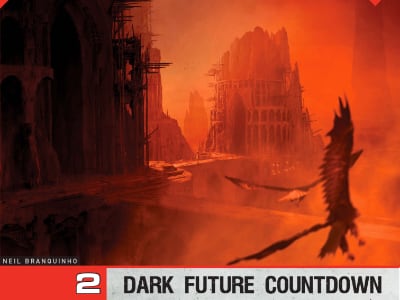
The 2045 envisioned in Cyberpunk Red is more physical and less virtual than our own, in spite of the fact that virtual reality is ubiquitous in the game. In our 2020 people are subjected to endless memetic bombardment by social media bots, and they (generally) fight each other with message threads and viral videos. In Cyberpunk Red they fight each other with guns, swords, knives, and cybernetically-enhanced martial arts. The America of 2020 is politically fractured but still intact. In 2045 it’s a shell of its former self and a mishmash of regional governments and uncontrolled areas have taken its place. The rest of the world has been reconfigured as well, nuclear weapons have been deployed multiple times, and the moon and earth orbit have been colonized.
Taking the original Cyberpunk timeline forward, rather than retconning it to make it work with current reality, was the right move. It liberates the setting, gives it more possibilities, and allows its creators to lean in hard on the style and attitude that has always characterized Cyberpunk. And it still promotes exploration of those original cyberpunk themes by exaggerating what we see all around us in real life.
Our group actually had a conversation in the middle of our one-shot about how wanton the PCs should be in their application of violence, given that they were hired by a corporation. That tension between the need to survive and the desire to avoid giving even more power to an amoral corporation is fundamental to the genre. It also tells me this game can be the vehicle for a campaign that’s much deeper than simply pulling legally-questionable ops and getting paid.
Hardwired
Cyberpunk Red’s mechanics are straighforward: when you roll to do something difficult, you want to meet or exceed a Difficulty Value set by the GM. You roll 1d10 and add your level in the appropriate Skill, plus your score in the Stat that governs that Skill.
Modifiers can subtract from skill rolls based on factors like darkness, lack of proper tools, and so on. When you roll a 0 on a d10, that’s a Critical Success, and you get to roll a third d10 and add that to your result. But if you roll a 1 on a d10, that’s a Critical Failure, and you must subtract the result of a new d10 roll from your total.
For example, Rudi the Fixer is fleeing across rooftops from a trio of gangers who would rather see him dead than alive. To clear a two meter gap he’ll need to make a roll:
- Rudi has a 3 in the Athletics Skill
- The governing Stat for Athletics is DEX, which for Rudi is 6
- The GM has set the Difficult Value at Competent (DV 18)
- Rudi’ player rolls 1d10 and luckily gets a 10. He rolls another d10 because of the Critical Success, and rolls a 4. That’s enough: 3 + 6 +10 + 4 = 23. That beats 18, so Rudi lands on the next rooftop and keeps running.
Every player character in Cyberpunk Red is assigned a Role (e.g., Netrunner, Exec, Nomad) and defined by Stats (generally rated from 1-10 and encompassing Intelligence, Reflexes, Dexterity, Tech, Cool, Will, Luck, Move, Body, and Empathy), Skills, Cyberware, Gear, and Weapons.
Initiative order is determined by a REF (Reflexes) + 1d10 roll, and characters may make a Move Action (e.g., take to steps to the corner of a building) and a Basic Action (e.g., fire a shotgun at an incoming corporate cop) in the same Combat Turn. The GM sets the Difficulty Value for ranged weapons by consulting a grid that combines weapon type and range band.
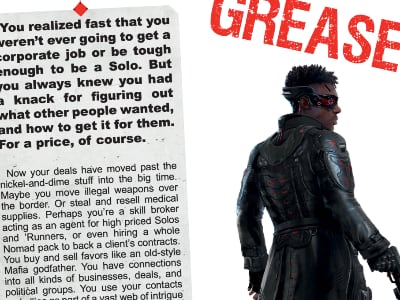
A character can absorb a number of damage points (Hits) equal to their Body x 5. When the Wound Threshold (1/2 the Hits total) is reached, the character starts taking negative modifiers. Let’s say Rudi is unarmored and has a Body score of 5: A Heavy Pistol does 3d6 damage, and will deal 11 points on an average roll. He can absorb 25 Hits and has a Wound Threshold of 13, so one more hit from that Heavy Pistol could either make it even more difficult for him to survive, or kill him outright. Combat is deadly in Cyberpunk Red.
Netrunning has always been a big part of Cyberpunk. To access the NET, Netrunners use Virtuality Goggles, which allow them to move in meatspace while interacting with the virtual world. In 2045 the NET is no longer a globally-connected system, and NET traffic is generally limited to heavily-shielded nodes, which means that they can’t be accessed remotely. This really helps with gameplay, because Netrunners now must operate in conjunction with the rest of their team. A Netrunner’s Interface score determines how many actions they can take each turn while jacked in, and Interface + 1d10 is applied against the Difficulty Value of the task to determine the outcome. Programs help a Netrunner in various ways, such as fighting off Black ICE in opposed tests.
There are more mechanical dials for netrunning, cybernetics, armor, weapons, gear, reputation, and so on, but at its core Cyberpunk Red is quite straightforward.
The Jumpstart Kit
This sturdy box contains:
- 44 page softcover Rule Book
- 52 page softcover World Book
- Four pages of EZ Reference (including an Encounters sheet just for the GM)
- Six pregenerated player characters (Fixer, Netrunner, Nomad, Rockerboy, Solo, and Tech)
- Two double-sided overhead tactical maps, cardboard standups (19 for characters, three for vehicles), 12 standup bases
- Two ten-sided and four six-sided dice
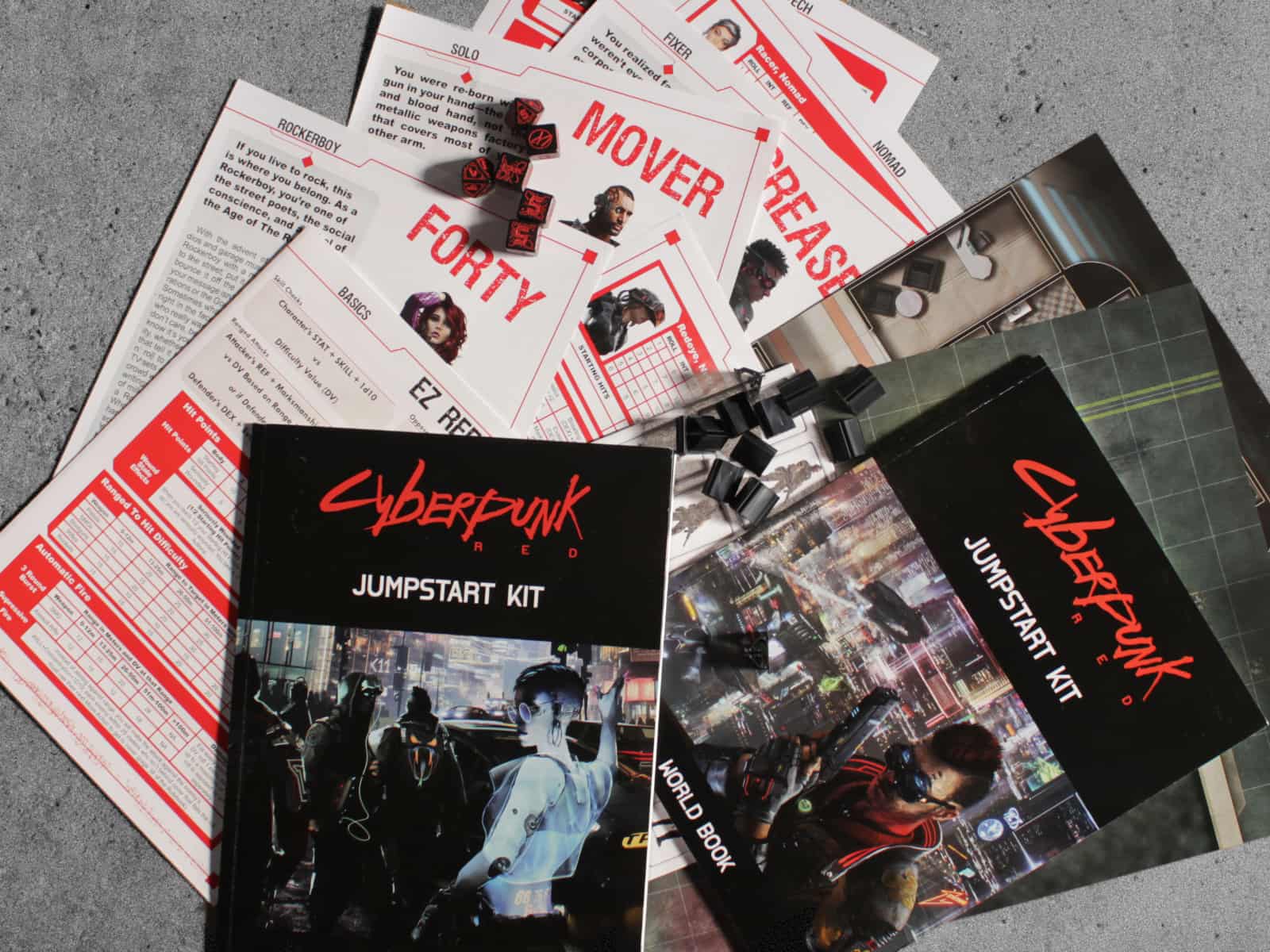
This kit really is aptly named. The goal is to quickly get you playing the game, and it succeeds. The Rule Book is carefully constructed to introduce players to the mechanics, describe how characters function, and illustrate the basics of combat and netrunning. The World Book provides enough meat for players to get a sense of the setting, and the GM is given three mini-scenarios and a larger scenario.
Beyond the mechanics of play, the Jumpstart Kit does a marvelous job of conveying the tone of Cyberpunk Red. The in your face bold black, white and red color theme pushes almost into garish territory. The art is evocative, the copy is clear and effective but also carries just there right bit of attitude. It’s easy to fall into the Night City setting.
Is this enough for someone who is completely new to tabletop roleplaying? I think it is. The Cyberpunk Red Jumpstart Kit is one of the best beginner boxed sets I’ve seen. It quickly and clearly introduces readers to the setting and mechanics and provides everything necessary to play. The one missed note for me is the primary introductory scenario. I would prefer something that more immediately pushes PCs into the action, which is why I created my own adventure. That said, for new GMs the slower buildup of the intro scenario may be more appropriate. Either way, it’s a minor quibble.
The Core Rulebook
This is a solid 456 page hardbound book. It provides:
- Introductions to tabletop roleplaying and the cyberpunk genre
- Three different methods of character creation (template-driven, fast & dirty, and calculated)
- Core, combat, netrunning, and healing mechanics
- The future history of Cyberpunk Red
- Information about Night City
- What it’s like living in the world of Cyberpunk Red
- Cybernetics, gear, and economics
- How to run Cyberpunk Red
- Three mini scenarios
- The Never Fade Away and Black Dog short stories
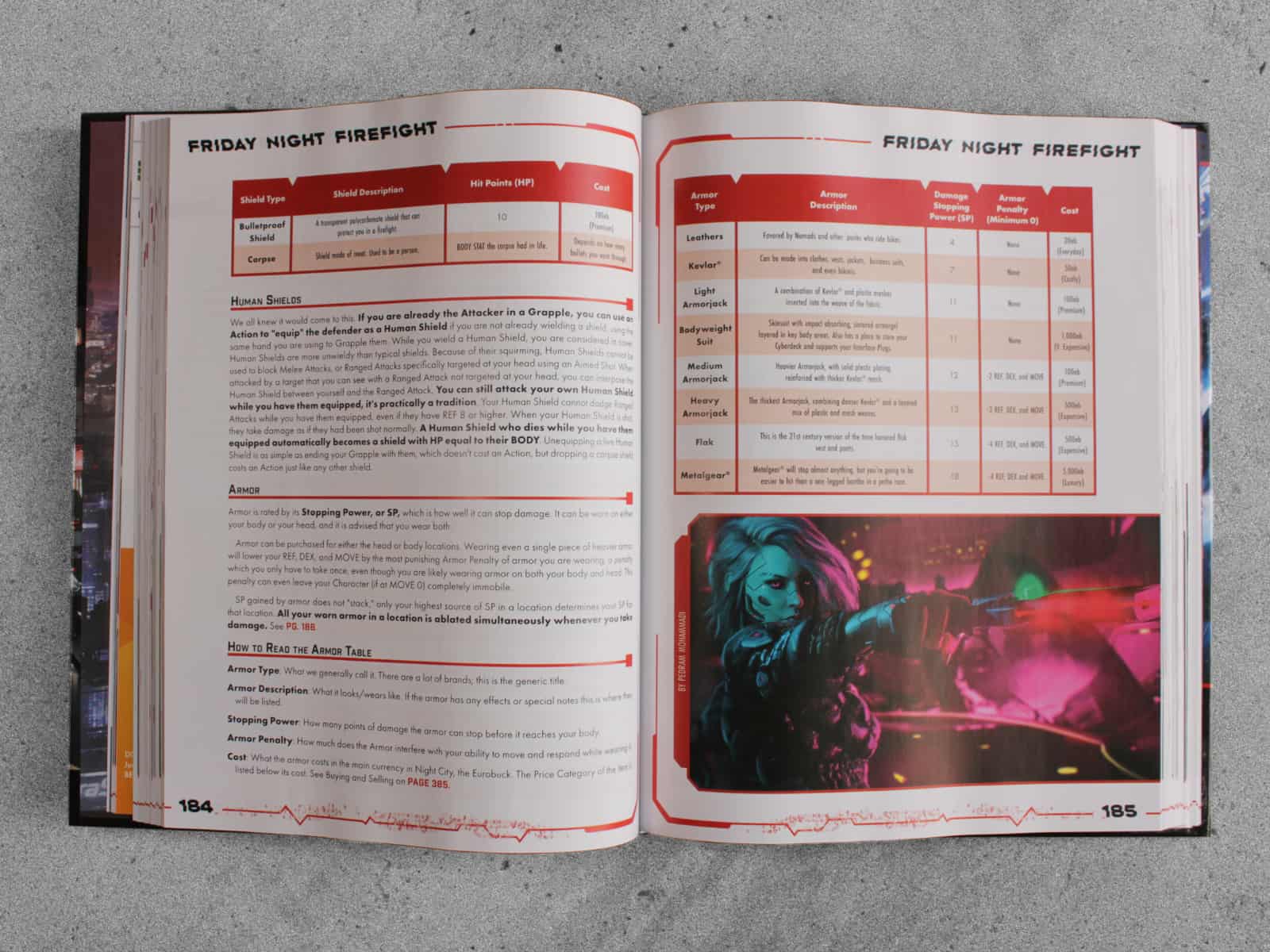
There’s a lot in this book. You’ll need to have a pair of ten-sided dice on hand, but other than that it gives you everything you need to play Cyberpunk Red. There’s far more gear here than in the Jumpstart Kit, and the cybernetics and netrunning sections are similarly robust. While the Jumpstart Kit gives you a feel for what it’s like to be a denizen of Night City in 2045, the history, Night City detail, and microeconomics sections of the core book really bring it all home.
The Running Cyberpunk section is what really sucked me in, though. It’s packed with useful guidelines, advice, and tools for game masters. The Jumpstart Kit proved to me that it’s easy to run a great session of Cyberpunk Red. The core book gives GMs a foundation for building robust Cyberpunk Red campaigns.
OK, So Which Flavor is Best?
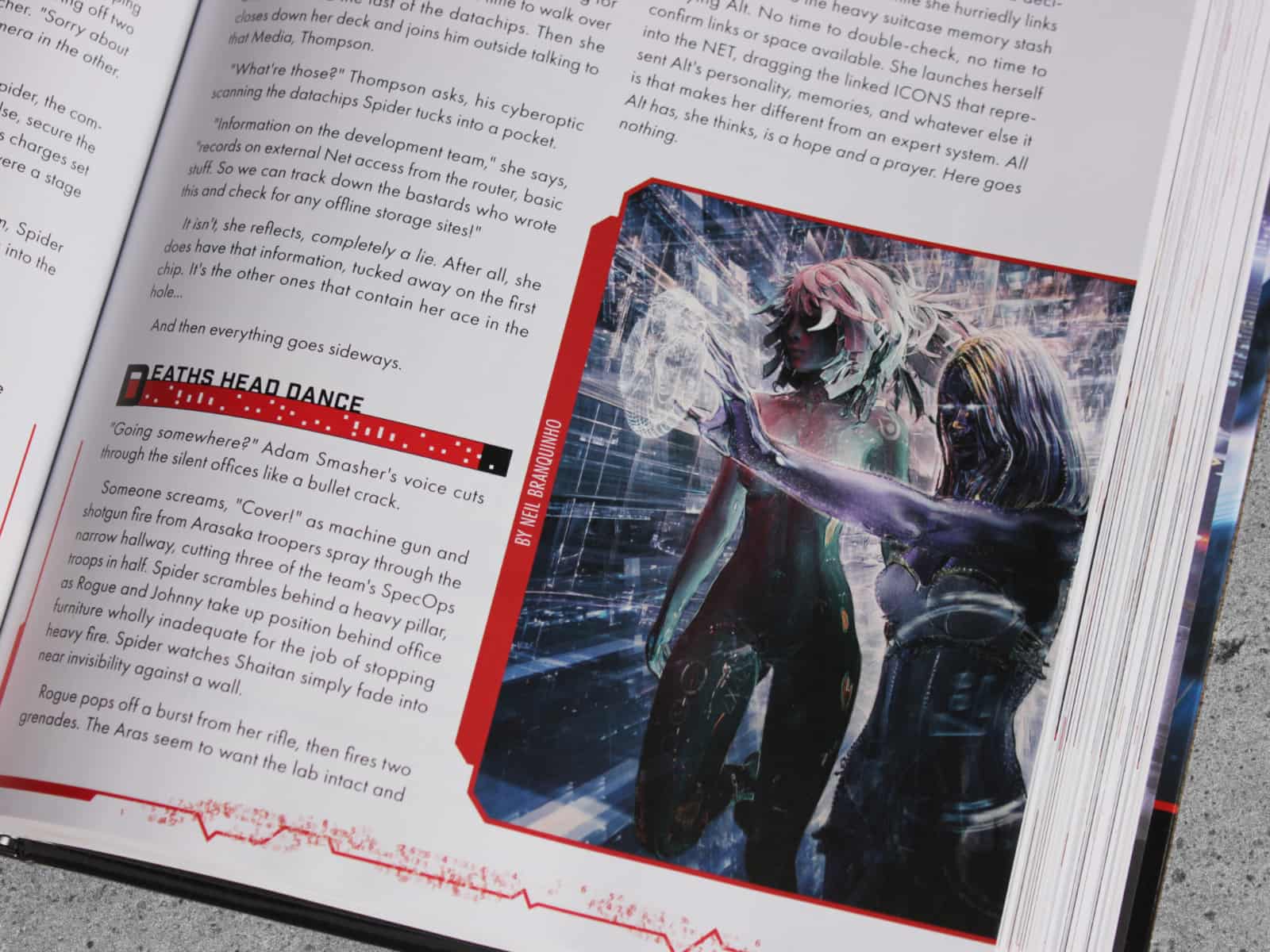
If the Jumpstart Kit is your favorite taco truck, the core book is your favorite fine restaurant. The food is tasty in both cases, but the experience is different.
The Jumpstart Kit is designed to get you into the action with as little fuss as possible. You get everything you need to start playing right away. Anyone who has played D&D or any other traditional tabletop RPG should have no trouble getting that hang of the Cyberpunk Red mechanics and running a session with the materials in this box.
If you’re completely new to tabletop RPGs you’ll be hard pressed to find a better beginner boxed set than the Jumpstart Kit. That said, the core book is well-organized, clearly-written, and suitable for newcomers. It goes deeper and broader than the Jumpstart Kit and takes more time to absorb. To return to the food analogy, the Jumpstart Kit is what you want if you’re eager to get into the game right away. You can get to eating those tacos almost immediately. Mmm… taaacos! But if you don’t mind doing more reading and taking the time to absorb the full Cyberpunk Red experience, the core book is the way to go. A cerveza, freshly-cooked chips, and home-made salsa while I wait for my tacos? Yes, please!
Given that as of this writing we’re still in the middle of a global pandemic and many of us won’t be sitting at the table together for some time, it’s important to note that both flavors of Cyberpunk Red are available in PDF form.
Buying Cyberpunk Red
- You can purchase the Jumpstart Kit directly from the publisher.
- Currently the core book is sold out in print, but you may be able to find it at your local game, hobby, or comics store.
- The PDF versions of both the Jumpstart Kit and core book can be purchased at DriveThru RPG.
[Updated 2021-01-04 to fix an error in the mechanics example]
Ω